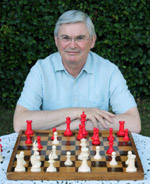Gabor Medal
Gabor Medal
The Gabor Medal is a prestigious award presented by the Royal Society, one of the oldest and most esteemed scientific institutions in the world. Named after Dennis Gabor, the Hungarian-British engineer and physicist who won the Nobel Prize in Physics in 1971 for his invention and development of the holographic method, the medal honors outstanding achievements in the fields of interdisciplinary science, with a particular focus on work that bridges the gap between the life sciences and other scientific disciplines.
History[edit | edit source]
The Gabor Medal was first awarded in 1989, following an endowment by the Gabor family to commemorate Dennis Gabor's significant contributions to science. The medal not only celebrates Gabor's legacy but also encourages innovation and excellence in scientific research that crosses traditional disciplinary boundaries.
Criteria and Selection[edit | edit source]
Recipients of the Gabor Medal are selected based on their exceptional research achievements that have applied insights from the physical sciences to advance the understanding of biological systems. This includes, but is not limited to, areas such as biophysics, computational biology, and systems biology. The award is open to scientists of all nationalities, provided their work has had a significant impact on the UK scientific community.
The selection process is overseen by the Royal Society, which convenes a panel of experts to review nominations and recommend a recipient. Nominations are invited from the scientific community, ensuring that candidates are judged by their peers.
Award[edit | edit source]
The Gabor Medal is awarded biennially and comes with a cash prize. In addition to the monetary award, recipients receive a silver gilt medal and are invited to deliver a lecture at the Royal Society, where they can present their research to the scientific community.
Notable Recipients[edit | edit source]
Over the years, the Gabor Medal has been awarded to a diverse group of scientists whose work exemplifies the spirit of interdisciplinary research. Notable recipients include:
- Scientist Name 1, for groundbreaking work in the field of computational biology.
- Scientist Name 2, recognized for their contributions to the understanding of complex biological systems through the application of physical science principles.
- Scientist Name 3, awarded for innovative research in biophysics that has opened new avenues for the study of living organisms.
Impact[edit | edit source]
The Gabor Medal has played a significant role in highlighting the importance of interdisciplinary approaches in solving complex scientific problems. By recognizing and rewarding research that crosses disciplinary boundaries, the medal encourages scientists to look beyond their fields of specialization and collaborate with others to advance our understanding of the natural world.
See Also[edit | edit source]
Search WikiMD
Ad.Tired of being Overweight? Try W8MD's physician weight loss program.
Semaglutide (Ozempic / Wegovy and Tirzepatide (Mounjaro / Zepbound) available.
Advertise on WikiMD
|
WikiMD's Wellness Encyclopedia |
| Let Food Be Thy Medicine Medicine Thy Food - Hippocrates |
Translate this page: - East Asian
中文,
日本,
한국어,
South Asian
हिन्दी,
தமிழ்,
తెలుగు,
Urdu,
ಕನ್ನಡ,
Southeast Asian
Indonesian,
Vietnamese,
Thai,
မြန်မာဘာသာ,
বাংলা
European
español,
Deutsch,
français,
Greek,
português do Brasil,
polski,
română,
русский,
Nederlands,
norsk,
svenska,
suomi,
Italian
Middle Eastern & African
عربى,
Turkish,
Persian,
Hebrew,
Afrikaans,
isiZulu,
Kiswahili,
Other
Bulgarian,
Hungarian,
Czech,
Swedish,
മലയാളം,
मराठी,
ਪੰਜਾਬੀ,
ગુજરાતી,
Portuguese,
Ukrainian
Medical Disclaimer: WikiMD is not a substitute for professional medical advice. The information on WikiMD is provided as an information resource only, may be incorrect, outdated or misleading, and is not to be used or relied on for any diagnostic or treatment purposes. Please consult your health care provider before making any healthcare decisions or for guidance about a specific medical condition. WikiMD expressly disclaims responsibility, and shall have no liability, for any damages, loss, injury, or liability whatsoever suffered as a result of your reliance on the information contained in this site. By visiting this site you agree to the foregoing terms and conditions, which may from time to time be changed or supplemented by WikiMD. If you do not agree to the foregoing terms and conditions, you should not enter or use this site. See full disclaimer.
Credits:Most images are courtesy of Wikimedia commons, and templates Wikipedia, licensed under CC BY SA or similar.
Contributors: Prab R. Tumpati, MD




